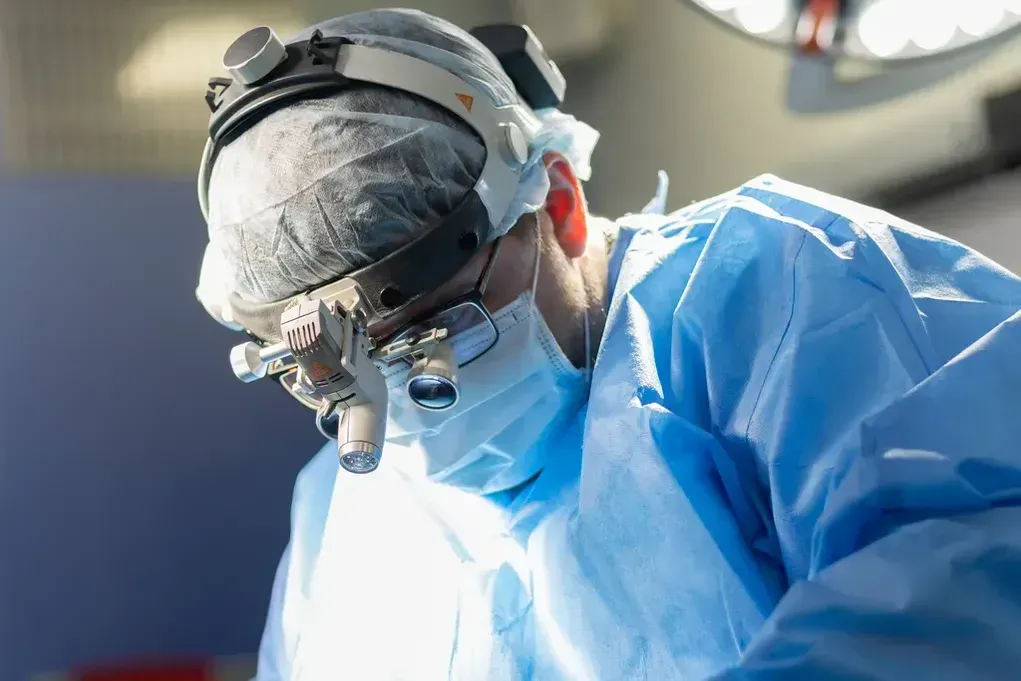Normotensive hydrocephalus (HTG)
A neurological disease that occurs due to impaired circulation of cerebrospinal fluid (CSF) and is accompanied by the Hakim-Adams triad (gait disorders, cognitive disorders, and urinary incontinence).

Normotensive hydrocephalus is associated with the accumulation of cerebrospinal fluid in the ventricles of the brain due to impaired absorption. As a result, the ventricles expand and exert pressure on the surrounding brain structures, especially the frontal lobes and subcortical formations responsible for cognitive functions, movement, and control of urination. Due to the similarity of symptoms with dementia and Parkinson's disease, HTG often remains undiagnosed or is mistaken for age-related brain changes. However, an important difference is that the disorders caused by HTG are reversible with timely surgical correction. Pseudodementia that occurs with HTH is characterized by cognitive impairments that may resemble Alzheimer's disease, but have a variable, undulating character, and after treatment the patient's condition improves significantly.
Causes
Impaired absorption of cerebrospinal fluid in the subarachnoid space
Traumatic brain injuries, intracranial hemorrhages
Infectious diseases of the central nervous system (meningitis, encephalitis)
Congenital anomalies of the cerebrospinal fluid system
Idiopathic form – develops for no apparent reason, more common in the elderly
Symptoms
Gait disorder
Cognitive disorders (pseudodementia)
Urinary incontinence
After-effects
The main method of detecting pathology is a cerebrospinal fluid removal test, which is performed using a lumbar puncture. During the test, 30-50 ml of cerebrospinal fluid is removed, after which the dynamics of the patient's cognitive functions and gait are assessed. If there is an improvement after the procedure, this confirms the diagnosis of HTG.
Additionally, instrumental diagnostic methods are used.: MRI of the brain, CT scan of the brain.
In the presence of all three symptoms of the Hakim-Adams triad and a positive cerebrospinal fluid withdrawal test, a diagnosis of normotensive hydrocephalus is established, and the patient is referred for surgical treatment.
Лечение

Conservative treatment
Conservative therapy for HTG is ineffective, since the disease is caused by a mechanical violation of the outflow of cerebrospinal fluid. The only effective treatment is bypass surgery, in which excess cerebrospinal fluid is drained into the abdominal cavity or atrium through a specially installed catheter.

Surgical treatment
Surgical treatment of normotensive hydrocephalus is not performed in our clinic, however, we diagnose the disease and refer patients to specialized centers for further treatment. With successful surgical treatment, most patients significantly improve their gait, cognitive functions, and urination, which allows them to regain their independence and improve their quality of life.
Schedule a visit to the clinic
How to reach
Moscow, 1st Yamskogo Polya Street, 15
Mon–Sun Around the clock
+7 495 255-50-03
How to get
From the Belorusskaya metro station of the Zamoskvoretskaya line - exit 4 After exiting the subway, walk through the pedestrian tunnel and climb the stairs. Move towards the railway tracks, go down the stairs immediately after them and walk along the house, then turn right onto 1st Yamskoye Pole Street. At the turn to 3rd Yamsky Pole Street, cross the road at the pedestrian crossing and continue along 1st Yamsky Field Street, after a few buildings on the left you will see Olympus Clinic MARS.
Travel time
9 minutes
Landmark
Olympus Clinic MARS sign
How to get
From the Belorusskaya metro station of the Ring line - exit 2. After exiting the subway, turn left and walk to the pedestrian crossing. Cross the road through two pedestrian crossings and move along the Tverskoy overpass. Go down the stairs immediately after the railway tracks, walk along the house, then turn right onto 1st Yamskoye Pole Street. At the turn to 3rd Yamsky Pole Street, cross the road at the pedestrian crossing and continue along 1st Yamsky Field Street, after a few buildings on the left you will see Olympus Clinic MARS
Travel time
11 minutes
Landmark
Olympus Clinic MARS sign


